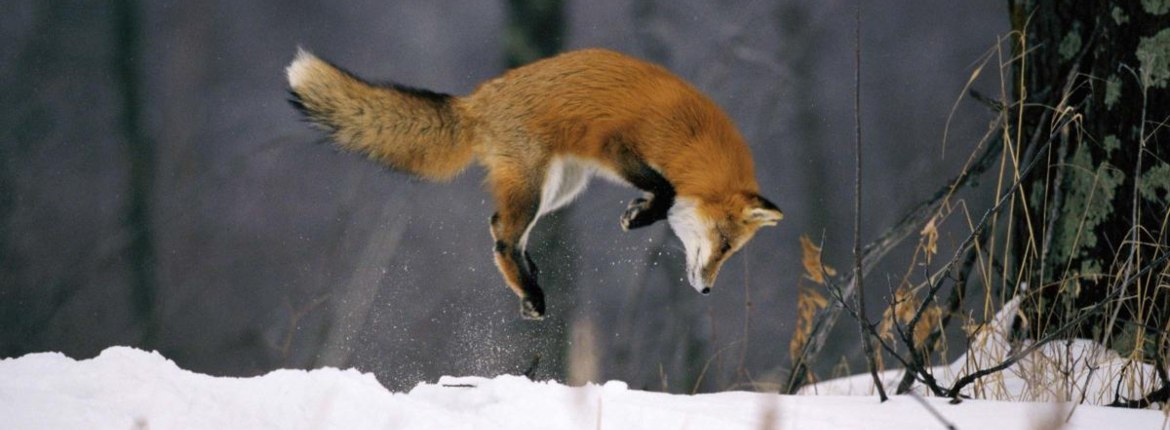When winter blankets the ground with snow, it creates a pristine landscape that showcases a secret world of animal tracks. These tracks left behind in the snow provide valuable insights into the presence and behaviours of various wildlife species. In this guide, we will delve into the fascinating realm of animal tracks in snow, with a particular focus on rodents. Understanding these tracks is not only of interest to nature enthusiasts, but it also plays a crucial role in ecological studies and animal behaviour research.

Mouse Tracks in Snow
One of the most commonly encountered animal tracks in the snow is that of mice. Mouse tracks are characterized by small, delicate footprints with four toes on both the front and hind feet. These tracks are typically around half an inch in length and resemble tiny dots scattered across the snow.
To distinguish between different mouse species, such as the regular mouse and the deer mouse, one must closely examine the size and shape of the tracks. Although these tracks may appear similar at first glance, experts can identify subtle differences that help differentiate between species. For further insights into the specific characteristics of different mouse tracks, it is advisable to consult reliable sources such as the “Comparison of Different Mouse Species’ Tracks.”
Interesting Fact:
Did you know that mice often use the same paths, creating what is known as “mouse highways”? These well-travelled routes are visible in the snow, forming a network of tracks that indicate the regular movement patterns of these tiny creatures.
But do mice burrow in the snow? The answer is yes. Mice take advantage of a hidden world beneath the snow called the subnivean space. This space, formed between the snowpack and the ground, provides insulation and protection from harsh weather conditions. Mice construct tunnels and burrows within this subnivean zone, creating a network of passageways beneath the snow. To learn more about the subnivean space and its significance to mice, refer to the authoritative source “Life Below the Snow: A Closer Look at the Subnivean Zone.”
Vole Tracks in Snow
Vole tracks are another set of distinct footprints commonly found in the snow. Similar to mouse tracks, vole tracks feature four toes on each foot. However, vole tracks are slightly larger, typically measuring around three-quarters of an inch in length.
One unique behaviour of voles is their ability to eat grass beneath the snow. These small rodents create complex tunnel systems in the snow, known as “vole runways.” These runways enable voles to move freely and find food sources even in the winter months. Observing these meandering trails and interconnected pathways across snow-covered fields provides a glimpse into the fascinating world of voles. For more information on voles and their snow tunnels, consult the informative guide “Voles in Winter: A Survival Guide.”
Rat Tracks in Snow
Rat tracks in the snow can be distinguished from mouse and vole tracks by their size and certain distinguishing features. Rat footprints are larger, measuring over an inch in length. Additionally, unlike mice and voles, rats’ tails often leave marks in the snow alongside their footprints, providing a clear indication of their presence.
To accurately identify rat tracks, it is advisable to consult reputable sources such as “How to Identify Rat Tracks.” This resource offers detailed information on the distinguishing characteristics of rat footprints, helping distinguish them from other rodent tracks commonly found in the snow.
Interesting Fact:
Unlike mice, rats are known to have a significant impact on their environment. They are excellent swimmers and climbers, making them highly adaptable creatures that can thrive in various habitats.
Other Animal Tracks in Snow in Ontario
Ontario’s snow-covered landscapes host a diverse array of animal tracks. Apart from rodents, there are several other species whose footprints can be commonly found in the snow. Let’s explore some of them:
- Deer Footprints in Snow: Deer footprints are larger and elongated, resembling two inverted hearts. The size of the tracks can vary depending on the age and size of the deer. Tracking deer footprints in the snow can provide valuable insights into their presence and movement patterns.
- Squirrel Footprints in Snow: Squirrel footprints exhibit a distinct pattern, with four toes on the front feet and five toes on the hind feet. These tracks often display a bounding or leaping pattern, reflecting the agile movement of squirrels in snow-covered environments.
For a comprehensive guide to animal tracks in Ontario winter, including detailed descriptions and identification tips, refer to the authoritative resource “Guide to Animal Tracks in Ontario Winter.”
Interpreting Tracks in Snow
Interpreting animal tracks in snow goes beyond mere identification; it allows us to understand the behaviours and habits of wildlife species. By closely examining these tracks, researchers and wildlife enthusiasts can gather valuable information about an animal’s diet, movement patterns, and interactions with its environment.
This knowledge plays a vital role in wildlife conservation efforts and ecological studies. Understanding animal tracks helps scientists monitor wildlife populations, assess the health of ecosystems, and make informed decisions regarding habitat management and conservation initiatives.
Identifying and understanding rodents and animal tracks in snow opens a window into the secret lives of wildlife in winter. These tracks provide valuable information about the presence, behaviours, and interactions of various species. By studying these tracks, we gain insights into the ecology of rodents like mice and voles, as well as other animals such as rats, deer, and squirrels. Observing animal tracks in snow not only enhances our understanding of the natural world but also contributes to wildlife conservation efforts and ecological research. So, the next time you come across these intriguing imprints in the snow, take a moment to appreciate the hidden stories they tell.
